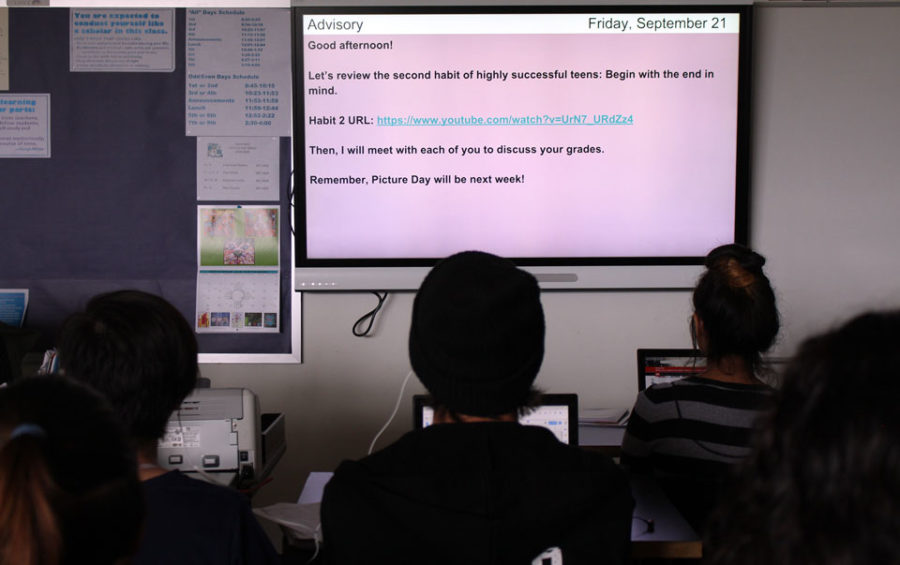SFHS Reacts to New Advisory Period
September 25, 2018
Well, the new school year is upon us and Santa Fe High has made another change to its schedule for the second year in a row. The most obvious change is that there are now eight periods instead of seven and students have an advisory class.
The advisory class was expected to be a quiet study time for students to catch up on their assignments. “Having a study hall is real great because now I don’t have to do my homework at home,” said sophomore Will Germann.
Assistant Principal Mr. Mutz explained the ideas behind adding the class. “The original intention was to allow students an opportunity during the school day to get extra help and tutoring,” he said. “It’s for students that don’t have internet at home, students that take the advanced classes and have a lot of homework, students that are involved in extracurricular activities and have a busy schedule so they don’t stay up too late doing homework.”
But many people in Demon Country, students and teachers alike, were surprised to learn that this “class” has a grade. That grade goes into a student’s GPA despite there being little to no curriculum for the class.
“I don’t like that the grade is included to a student’s GPA with no curriculum,” said a teacher who prefers to remain anonymous. “Advisory doesn’t have any standards or work, so it shouldn’t be graded at all.”
“It’s a credit so students are getting an elective credit, but it’s still being debated whether it will be actually added to the student’s GPA,” explained Mr. Mutz.
Besides the whole controversy of the GPA, some teachers do feel that the class is good for some students. “I feel that stronger students are going to take advantage of it, and the weaker students will more need help and supervision so they don’t fool around and blow off the class,” said the same teacher. “Besides that, I love it because it gives me time to work as a teacher, and strong students should love it because it gives them time to work as students.”
Ms. Gerber supports the new advisory. “I like how it builds flexibility into the school day,” she said. “My English students can use advisory to make up work they missed, and it gives my yearbook and journalism students more flexibility for reporting during the day.”
Roster sizes vary greatly by what period the class is. Some teachers have 30 students while others have only five or six. “It needs to be fixed, definitely,” said Mr. Mutz. “What I wanted to be done was to have them be more connected to the academies, but this year the teachers weren’t involved with the certain academies. There’s something I messed up in scheduling to make the class this widespread, so I’ve got to do better.”
Teachers use the period in a variety of ways. Those who coach sports can use the time for kids to have fun and play sports while other teachers use it only for academics. Some advisory periods are attached to a certain class, such as AP Biology and AP Chemistry.
Mr. Morrison, a social studies teacher, said he uses his advisory for college prep, clubs, and mathematics. He has also devised a system in the Innovate Academy where Innovate students who have fifth-period advisory can choose which advisory class they go to. Several teachers are involved in this, including Mr. Morrison. At the beginning of class, the teacher takes attendance and then students get sent to their chosen class for the day. Their choices include flag football, movie club, blackjack tournaments, chess club, and a quiet study hall.
Last year, Mr. Marano wanted to have an advisory for teachers to monitor students’ grades and for other purposes,such as using Naviance. This year he wants students to get more tutoring and help with their work.
People have a lot of different reactions to the new advisory, but in the end, it will hopefully lead to a productive school year. “Advisory is still evolving,” added Mr. Mutz. “I’m hoping students take advantage of what its supposed to be used for. I hope students realize how lucky they are to have this.”


